How Does Nature Carve Sandstone Pillars and Arches?
Researchers say the right mix of erosion and stress creates Earth’s natural sandstone arches and columns
/https://tf-cmsv2-smithsonianmag-media.s3.amazonaws.com/filer/47/5f/475f2d65-ddc3-4b5d-a434-bf5fb319d48c/8078224634_f4323bbfb2_o.jpg)
Some of the most stunning structural feats aren’t built by architects or sculpted by artists. From Bryce Canyon to the Elbe Sandstone Mountains of central Europe, sandstone arches, alcoves, and pillars around the globe look strikingly similar to the same features in manmade architecture. So, how does nature do it?
A study published yesterday in Nature Geosciences suggests that a feedback cycle of stress and erosion might be behind these natural marvels.
According to a team of researchers from the Czech Republic, erosion gradually removes grains of sand, placing the weight of the rock on the rest of the grains and causing them to more tightly interlock. As grains get pulled off rock, the weight shifts unevenly, and the grains in areas that bear more weight or gravitational stress are harder to erode—leaving behind the arches, alcoves, and pillars for human tourists to admire.
Scientists first began describing and classifying these natural architectural features more than 150 years ago, but even modern scientists’ theories of how sandstone arches and pillars form differ quite a bit. For example, some geologists attribute arches on the Colorado Plateau to undercutting the base of the rock, while others think fractures in the rock produced them.
Similarly, some scientists argue that stream erosion carved cave pillars in Venezuelan caves, while others point to erosion washing everything away but the grains that cemented together after being soaked in fingers of fluid that seeped into the soft rocks. Most explanations are based on field observations and studies of rock samples under the microscope, and theories vary from one locale to another. No one had come up with an underlying mechanism that generally fit each scenario.
The Czech team wanted to take a different approach. While doing fieldwork in Strelec quarry in the Bohemian Cretaceous Basin, they noticed that small arches and pillars—only about 2 feet high at most—formed out of the sandstone over mere months or years, rather than the millennial time scales associated with large geologic architecture.
“It was clear that processes responsible for them were operating at present time in the quarry and thus the processes can be potentially isolated and explained,” says Jiri Bruthans, a geologist at Charles University in Prague and a co-author on the study.
Why not to try to make these landforms in the lab? Bruthans and his colleagues started by observing how sandstone behaves under stress. They cut cubes of sandstone from the Strelec quarry, submerged them in water, and applied vertical force to the top of the cube to simulate the stress that grains of sand in the stone feel from rocks above them.
With no vertical stress, the cubes gradually disintegrated into individual grains. In contrast, under increasing vertical stress, the cube progressively wasted away to an hourglass shaped pillar. See for yourself in the video created by the authors to supplement their paper:
Critically, the sandstone from Strelec doesn’t contain cementing minerals that help bind the sand particles together. Instead, the authors found that the stress put on the sandstone causes minerals to interlock and hold the rock together.
The Czech team came up with a mechanism to explain the pillar formation, and numerical modeling confirmed their suspicions. Basically, the load within the sandstone block is carried unevenly, with some sandstone grains carrying more weight than others. Water can easily seep into the rock’s pores—the space between grains—and erode bits of sand off, but grains that carry more of the load are harder to pull away.
Think of it like a dry brick wall. “It is easy to pull out brick from the top of the wall but hard to pull brick from the bottom, as it is loaded,” says Bruthans. As water pulls off grains of sand, fewer and fewer grains carry more of the load, and the stress between the grains increases, binding them more tightly together and making them more resistant to erosion.
Some sandstone does contain cementing agents, though. So, the researchers sampled cemented sandstone from the Czech Republic, Venezuela, and the United States. Exposing these cemented cubes to salt and frost weathering also produced hourglass pillars when weighted, and unloaded cubes disintegrated four times faster. The cementing materials dissolve with erosion, and thus cemented cubes are subject to the same stress forces at play in uncemented cubes.
Obviously, erosion can come in different forms as well. So, the researchers simulated rainfall and flowing water in the lab to see if it might have a different effect. In all cases, loaded cubes were more resistant to erosion than unloaded cubes, showing that stress was the key factor.
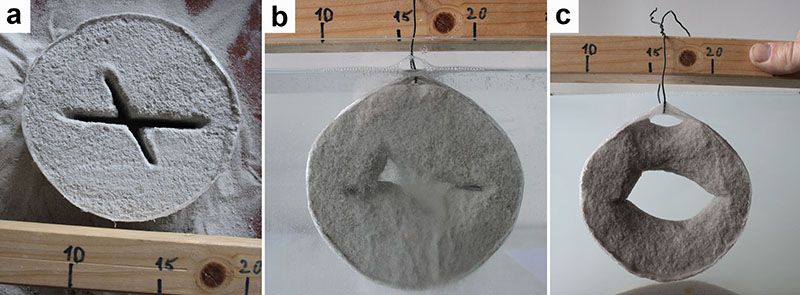
Beyond pillars, the researchers also tried to make arches and alcoves in the lab. They found that the shape the rock forms depends on the geometry of the initial exposed hunk of sandstone. Cubes with small, central horizontal cracks produced arches. Partial horizontal cuts into the cubes produced alcoves. And vertical cracks seem to help make vertical columns or pillars. Also, different erosion processes can produce the same shape, if they start out with similar rocks.
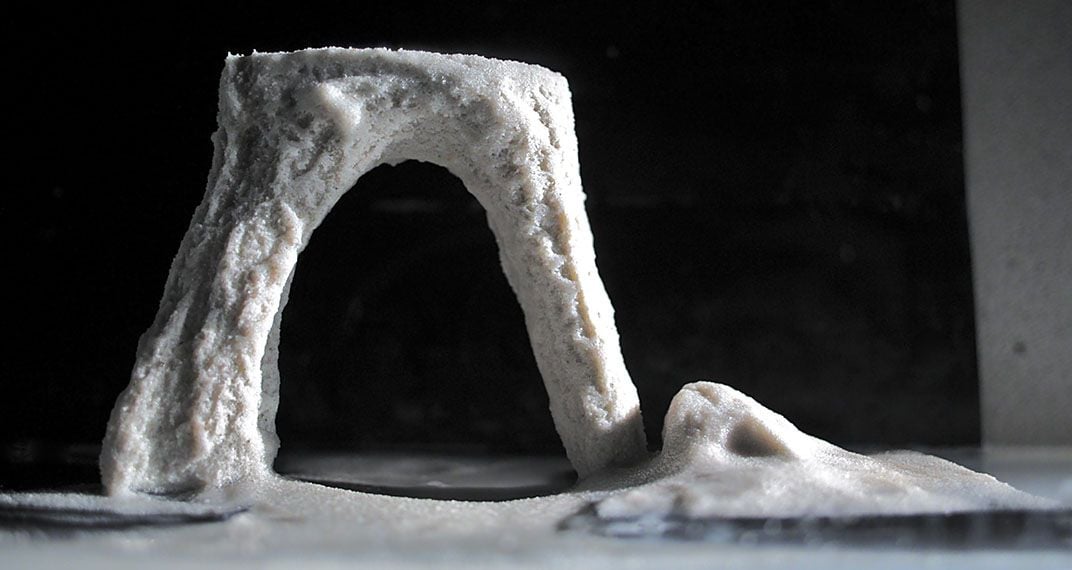
Given this, the authors call for a more nuanced explanation for how arches and pillars form in sandstone. “We should not say erosion or weathering carved the forms, as it was the stress field which give the forms the shape. Erosion processes are mere tools controlled by stress,” explains Bruthans.
That such a simple mechanism could create such beautiful structures contrasts our human view of what goes into art or architecture that’s aesthetically pleasing. “To create perfect shapes you do not need intelligence or planning,” says Bruthans. In fact, “the opposite is true for nature. Most perfect things are made by simple mechanisms.”
/https://tf-cmsv2-smithsonianmag-media.s3.amazonaws.com/accounts/headshot/Screen_Shot_2014-01-27_at_12.05.16_PM.png)

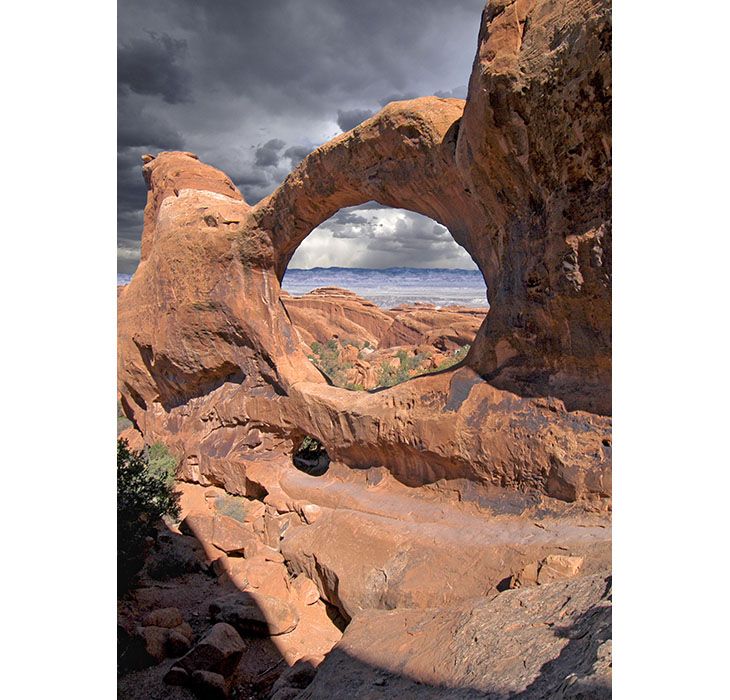
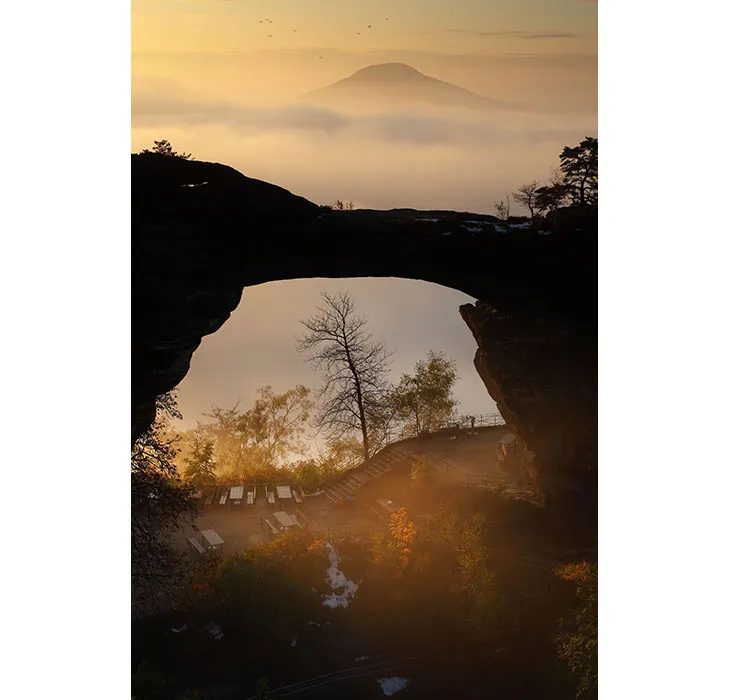

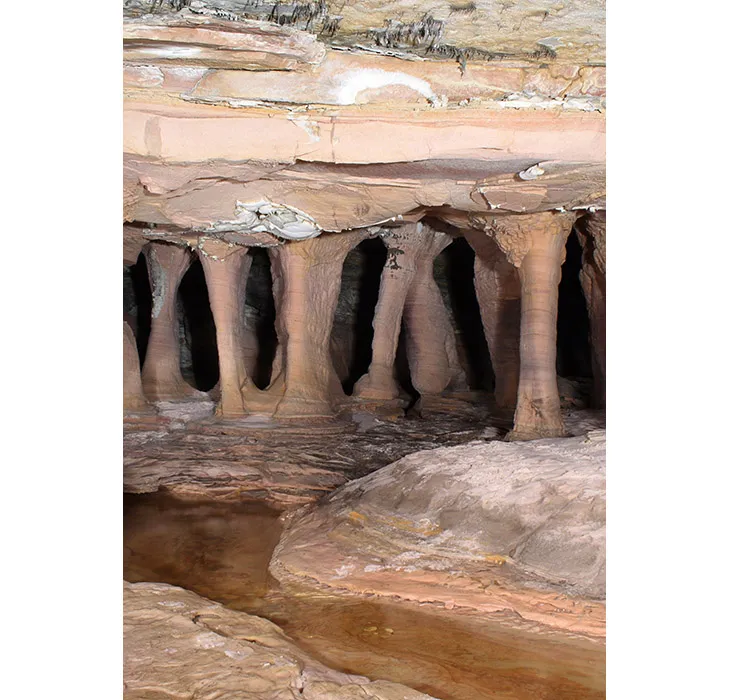


/https://tf-cmsv2-smithsonianmag-media.s3.amazonaws.com/accounts/headshot/Screen_Shot_2014-01-27_at_12.05.16_PM.png)